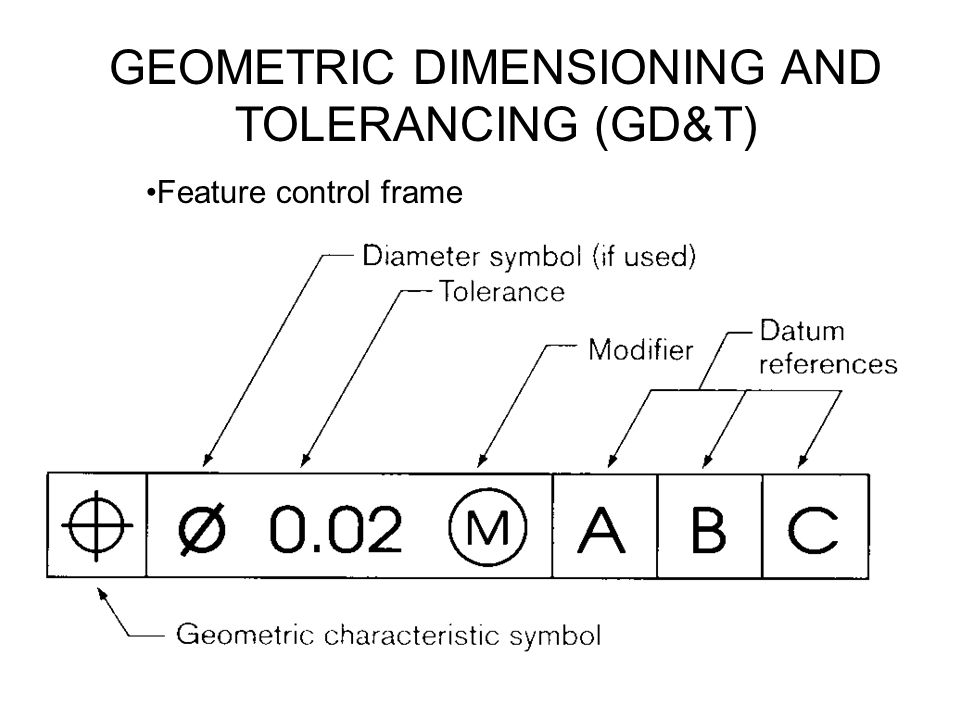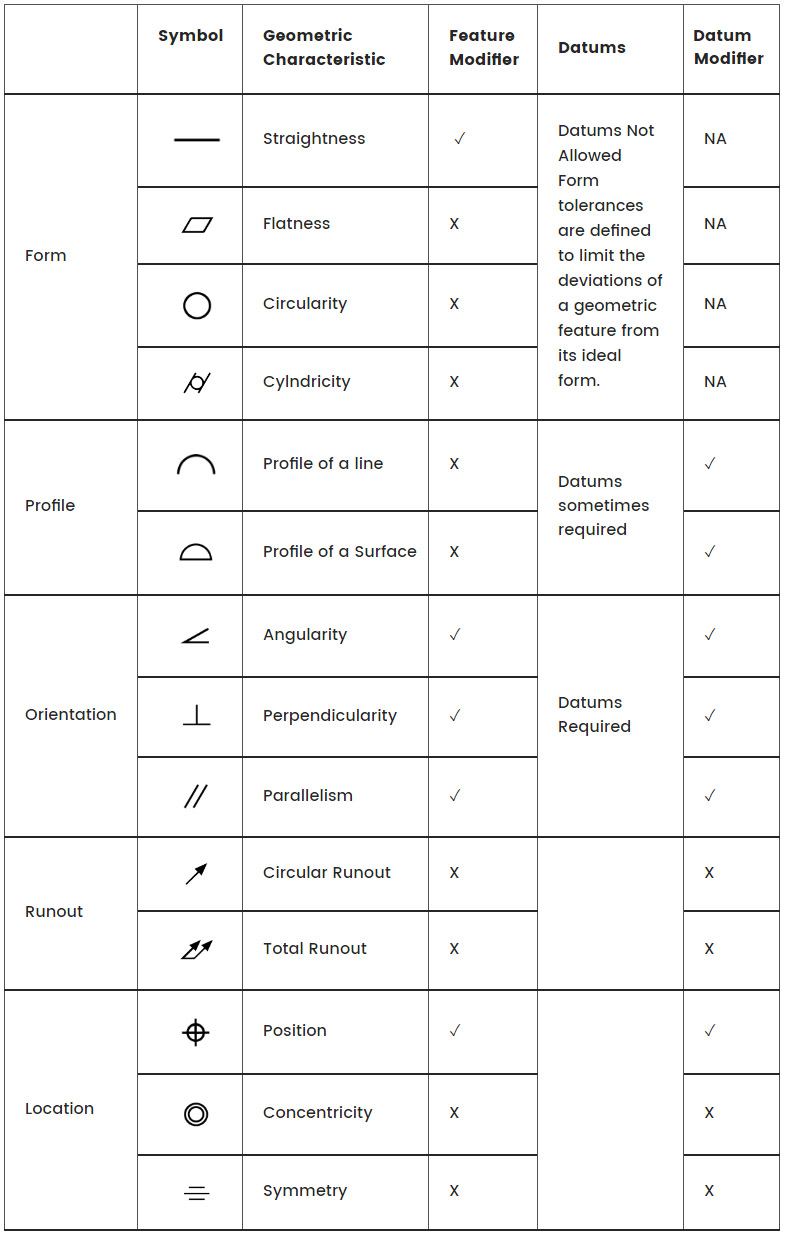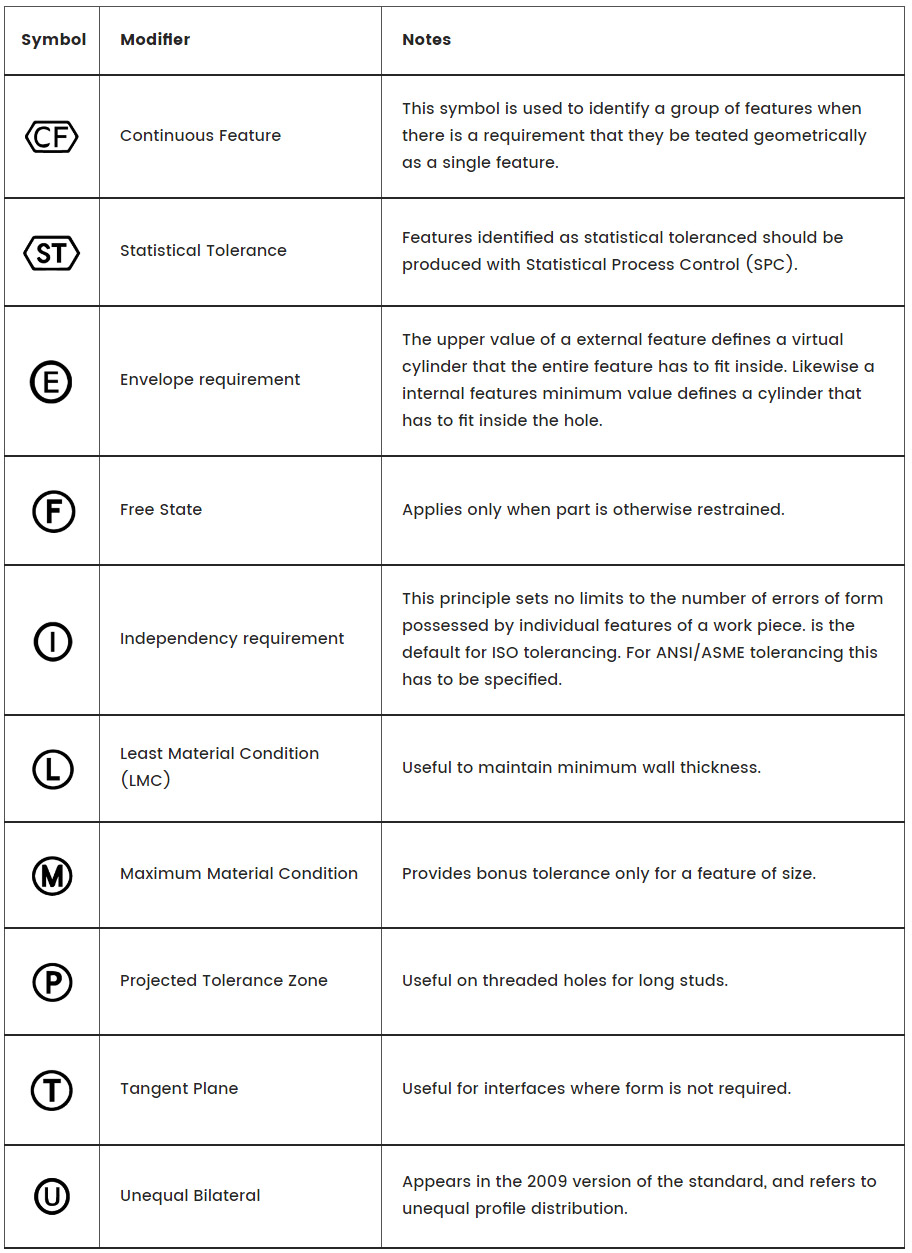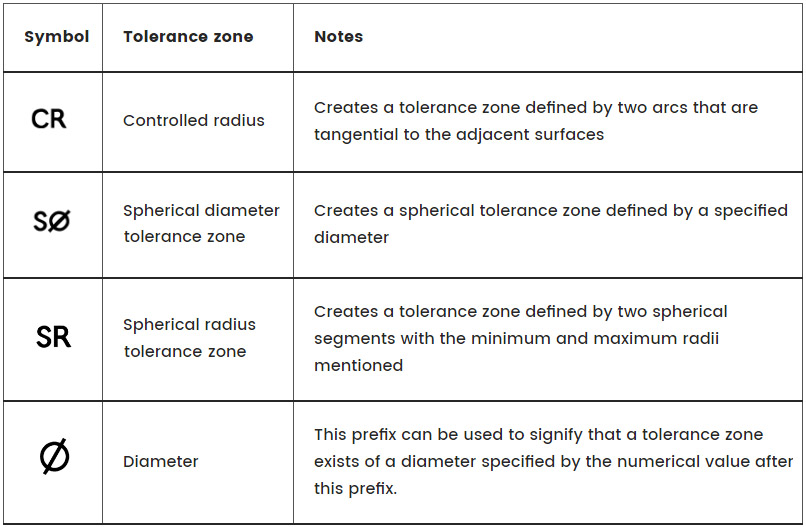What is GD&T?
Due to the variations in the manufacturing process, the size and dimension of the manufactured project are different from the original CAD model. In order to better control and communicate these variations, engineers and manufacturers use a symbolic language called GD&T(Geometric Dimensioning and Tolerancing).

GD&T is used to define the nominal (theoretically perfect) geometry of parts and assemblies, to define the allowable variation in form and possible size of individual features, and to define the allowable variation between features.
- Dimensioning specifications define the nominal, as-modeled or as-intended geometry. One example is a basic dimension.
- Tolerancing specifications define the allowable variation for the form and possibly the size of individual features, and the allowable variation in orientation and location between features. Two examples are linear dimensionsand feature control frames using a datum reference.
Common GD&T Symbols

Modifiers
If no modifier follows a datum feature size, the datum feature applies regardless of material boundary.

Tolerance Zones
Specifies the type of zone applied to the tolerance.

Ready to Work On your Next Project?
Let us help you provide high quality parts in short time. Get your project started now!
-q4gvl4k29y4hq8j9rjpapvj0ft06fje63olt7p210i.png)












